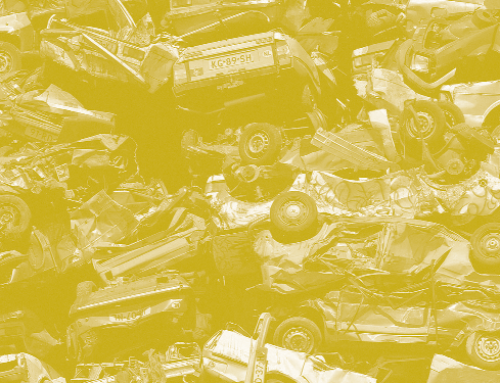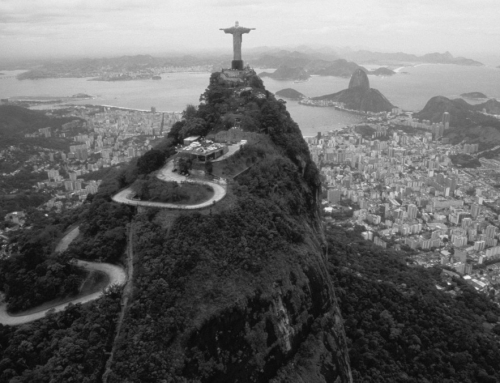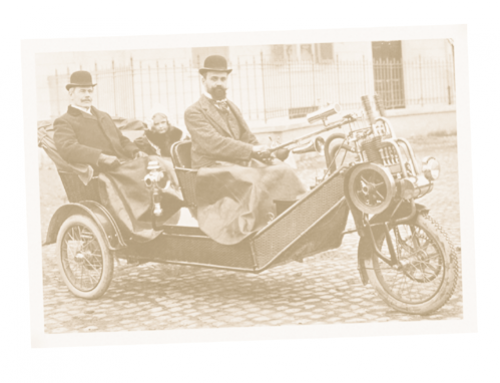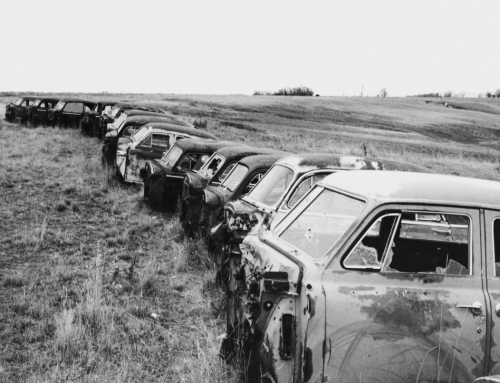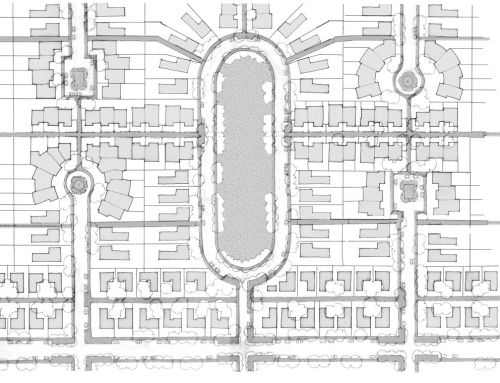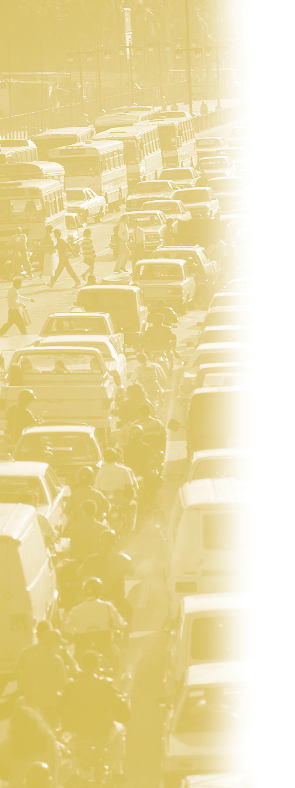 In rural areas and small cities of China and India, millions of small locally made three- and four-wheel “rural vehicles” are proliferating. In China, the vehicles are banned in large cities because of their slow speed and high emissions, but even so rural vehicle sales in China outnumber those of conventional cars and trucks. These vehicles, which cost anywhere from $400 to $4,000 each, are the heart of millions of small businesses, transporting farm products, construction materials, and locally manufactured products. They also serve as the principal mode of motorized travel in rural areas.
In rural areas and small cities of China and India, millions of small locally made three- and four-wheel “rural vehicles” are proliferating. In China, the vehicles are banned in large cities because of their slow speed and high emissions, but even so rural vehicle sales in China outnumber those of conventional cars and trucks. These vehicles, which cost anywhere from $400 to $4,000 each, are the heart of millions of small businesses, transporting farm products, construction materials, and locally manufactured products. They also serve as the principal mode of motorized travel in rural areas.
Motorization is accelerating even more rapidly in cities. Personal vehicles, from scooters to large company cars, are improving access to goods, services, and activities, including an expanded array of job and educational opportunities. They provide unmatched flexibility, convenience, and freedom. For many individuals, vehicles are desirable as a secure and private means of travel, and as status symbols. For businesses, they are a means of increasing productivity.
But personal motorization also imposes enormous costs, especially in cities. The well-known litany includes air and noise pollution, neighborhood fragmentation, and high energy use. Motorized transport is the largest consumer of the world’s petroleum, making it central to international concerns over energy security and political stability in volatile regions. China is now the second largest importer of oil in the world, although its vehicle ownership rates are but one-fiftieth of the US’s. The developing world is an increasing source of greenhouse gas (GHG) emissions, which are rising faster in transportation than in any other sector. Developing cities and countries are in a quandary. How can they accommodate the intense desire for personal mobility while mitigating the heavy economic, environmental, and social costs of motorization? For countries such as India and China, which look to automotive manufacturing as a pillar of economic development, the dilemma is extreme.
The New Reality of Personal Transport: the Good and the Bad
Motorization is soaring virtually everywhere. The number of motor vehicles in the world is expected to reach about 1.3 billion by 2020, more than doubling today’s number. Fastest growth is in Latin America and Asia. In China, vehicle sales increased over fifty percent per year over the past few years, from 700,000 in 2001 to 1.1 million in 2002, and about 1.7 million in 2003. Beijing already has over two million cars.
These figures and forecasts, like almost all published data on vehicle ownership, do not include motorized two-wheelers, nor the rural vehicles mentioned above. China alone has more than fifty million scooters and motorcycles, and over twenty million rural vehicles. The costs of these vehicles are low and dropping—new mopeds and small motorcycles can be purchased for as little as $200. They are found throughout Asia and are spreading to Latin America. Proliferation of these low-cost scooters and motorcycles is accelerating the motorization process, encouraging an early leap from buses and bicycles to motorized personal travel. No longer do individuals need to gather considerable savings to buy a vehicle. In Delhi, where the average income is less than $1,000 a year, close to eighty percent of households nevertheless have motor vehicles, most of them two-wheelers.
The benefits of motorization are great, but the disadvantages are serious: more pollution, more energy use, and undermining of public transport services. Public transport is heavily subsidized in most cities because of its large positive externalities—reduced need for roadways, reduced congestion—but also because it ensures access by poor people. Nevertheless, even with low subsidized fares, many poor people still cannot afford transit services. Thus cities face pressure to keep fares very low, although in doing so, they sacrifice bus quality and comfort. Middle-class riders react by buying cars as soon as they can. With low-cost scooters and motorcycles, the flight of the middle class is hastened, transit revenues fall, and operators reduce quality further as they serve poorer clienteles. Quantity of service often decreases as well. In nearly all cities worldwide, public transit is losing market share.
The benefits of motorization are great, but the disadvantages are serious: more pollution, more energy use, and undermining of public transport services.
Motorization’s enormous stress on city development and finances is troubling. A study by the US National Research Council asserts, “with very few exceptions, rapid growth in demand for motorized transport has swamped transport [infrastructure] capacity in the cities of the developing world.” The World Business Council for Sustainable Development, an organization of major automotive and other industrial companies, warns: “The major challenge in the developing world is to avoid being choked…by the rapid growth in the number of privately owned motorized personal-transportation vehicles…[Personal mobility] is deteriorating in many areas where it had been improving in the past.” Many cities in developing countries, with a fraction of the car ownership of the United States, now experience far worse traffic congestion and pollution than exist in the United States.
The roadway construction and financing challenge is not just one of economics and financing. It is also political and social. Only a small minority of people in the developing world own cars and benefit from massive road-building budgets. In contrast, the vast majority suffer from increasing traffic congestion, noise, and pollution. In cities with many motorized two-wheelers, the vehicle-using population is larger but still a small share of total travelers. The solutions are not obvious. Desperate to keep traffic flowing, Shanghai, one of the best managed cities in the world and also one of the densest, has taken the controversial step of limiting bicycle use in downtown areas. Meanwhile, destruction of neighborhoods to build new expressways is starting to spark social unrest, as it did in the United States in the early 1960s.
Privatization has been one response to financing challenges. Many parts of the developing world, particularly in Latin America, are selling roads, ports, intercity railroads, and other facilities, or sometimes just operating rights, to private companies as a means of financing the  operation and expansion of new and existing facilities. Even China is relying on tolls to finance intercity roads. Although privatization is an attractive solution to the funding woes of governments in developing countries, it creates a new mix of winners and losers that merits close scrutiny.
operation and expansion of new and existing facilities. Even China is relying on tolls to finance intercity roads. Although privatization is an attractive solution to the funding woes of governments in developing countries, it creates a new mix of winners and losers that merits close scrutiny.
Air pollution’s adverse effects are also attracting the attention of local policymakers. Motor vehicles play a central role, accounting for about half of urban pollution, even in places with very low rates of vehicle ownership. Santiago, Mexico City, Beijing, Katmandu, and Delhi are now aggressively imposing new laws to reduce air pollution. Lead removal from gasoline has been successfully regulated almost everywhere. Its removal is motivated partly by health concerns but also because lead destroys the effectiveness of catalytic converters, which are crucial for meeting tighter vehicle emission standards. With more stringent emission standards, most cities will soon control air pollution, just as those in the US have done. Large international automotive and energy companies are key.
More troublesome, because solutions are not obvious, is petroleum use. Motorization leads to sharp increases in oil consumption. In most of the developing world, cars use about six times as much energy as buses per passenger-kilometer, and about twice as much as a small (four-stroke) modern motorcycle. These ratios can vary considerably, depending mostly on ridership levels.
While soaring oil use is not a compelling problem to local policymakers, it is of great concern to national governments and, even more, to the global community. The global transportation sector is now responsible for almost one-fourth of worldwide carbon dioxide emissions. The International Energy Agency projects that oil use and GHG emissions from developing countries will grow three times faster than emissions from the United States, Europe, and Japan over the next twenty years; others project an even greater differential.
Overall, about half the world’s petroleum is used for transportation. Thus, greater transportation energy use translates directly into greater vulnerability to supply disruption, greater pressure on Middle Eastern politics, and greater emissions of carbon dioxide. Although the transport sectors of countries such as China and India are still small contributors with relatively few vehicles per capita, their emissions are increasing at a sharp rate. In China, for instance, transport accounts for less than ten percent of GHG emissions. In cities such as Shanghai, however, four- to sevenfold increases are anticipated in the next twenty years.
The challenge for these cities is heightened by the fact that uniform prescriptions do not work. Motorization patterns vary widely across the globe, particularly among developing countries. In some Asian cities, conventional trucks, buses, and cars account for only five percent of vehicles, compared with sixty percent in others. In Delhi and Shanghai, roughly two thirds of vehicles are motorized two- and three-wheelers, whereas in African and Latin American countries, almost none are. In South Africa, minibus jitney transportation accounts for a third of all passenger-kilometers of travel, but in others it plays a negligible role. Shanghai had 22 cars per thousand residents in 2001, whereas much poorer Delhi had nearly three times as many. Numerous factors influence motorization. Income plays a central role, but there are other factors more readily influenced by public policy and investments.
Motorization patterns vary widely across the globe, particularly among developing countries.
The challenge of dealing effectively with rapid population growth, rapid motorization, and large groups of low-income travelers would be difficult for cities with substantial financial resources and strong institutions. For developing cities with limited funds and planning expertise—and inexperienced institutions—effective transportation planning, infrastructure development, and policy implementation are extremely difficult. In many cases, the problem is lack of political will, compounded by lack of money and effective institutions. We have these problems to varying degrees in the United States as well.
The difference is that the timeline for transportation system development in today’s developing countries is compressed compared with more affluent cities and nations. The rapid speed of development creates pressure for substantial investments within a relatively short period. Finding the resources to finance the needed infrastructure investments and the expertise to manage the growth is a challenge in many parts of the developing world.
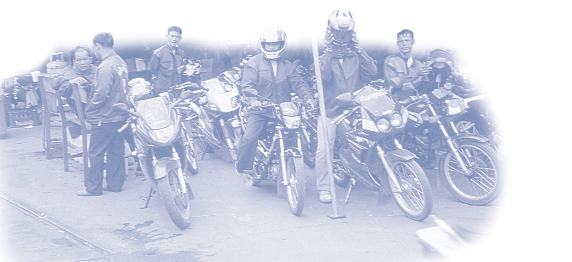
Leapfrogging is Not the Answer
Transportation systems are highly fragmented, with diverse technologies and a diverse mix of public and private investors, managers, and users. Frustrated policymakers reflexively turn to technological fixes, because they generally require less behavioral and institutional change.
Leapfrog technologies—advanced technologies that allow developing countries to skip over difficulties encountered in industrial nations—are the highest-order technical fix. The principal example of successful leapfrogging in developing countries is the use of cellular phones in place of extensive networks of telephone landlines.
Some leapfrog transportation technologies are being pursued in developing nations. Information technologies control roadway congestion and collect tolls in many cities. Electric bicycles and scooters in China and a number of other countries reduce urban air pollution. Some cities are switching buses, taxis, and other vehicles to natural gas; Mexico City and a few others are investing, with international aid, in fuel cell buses. And Shanghai built a maglev train, employing German technology that failed to find a market in developed countries.
In the end, though, the case for a leapfrog approach is far less compelling in transportation than it has been in telecommunications. Advanced transportation technology will not revolutionize the way people and goods get around. Some fuel, propulsion, and information technology options are currently available, and their deployment could be accelerated, generating modest emissions or energy savings. But they tend to be more costly than conventional petroleum combustion technologies and can require huge financial and institutional investments. Advanced transportation technologies are clearly an attractive option in developing countries, but great care must be taken to adapt to the setting, anticipate unexpected costs, and provide expertise and institutional investments to implement these technologies successfully.
 Buses Reborn
Buses Reborn
Entirely novel policies, investments, and technologies are not needed. There are plenty of examples of effective initiatives around the world, many of them pioneered in developing countries. What is missing in most cities are commitment and public resources.
Bus rapid transit is viewed as perhaps the most important transportation initiative today, not only in Asia and Latin America but even in the United States. A few bus rapid transit operations have been able to move as many passengers in one bus lane as on a rail line, and at a fraction of the cost (see Aaron Golub’s article on page 2 in this issue).
There are other examples of successful transportation initiatives in developing countries. Singapore coordinated land use planning and public transit investments so that businesses and homes are close to trains and buses. It also strongly discouraged car ownership by imposing very high registration fees on vehicle purchases. Shanghai also coordinated land use and transit planning and provided infrastructure for bicycles and pedestrians to encourage nonmotorized alternatives (but it is now reconsidering that strategy). Curitiba created an efficient bus rapid transit system in the 1970s, as well as a pedestrian-only zone in the city center. Bogotá is building a bus rapid transit system modeled after Curitiba’s. Car use there is discouraged in a variety of ways such as allowing only certain cars into the city on any given day according to license plate number; similarly, a network of bike lanes and expanded sidewalks encourages alternatives to motorized travel.
Roles for the US
As motorization overwhelms cities of the developing world, the challenge for public authorities is twofold: to enhance the attractiveness and efficiency of collective and nonmotorized modes, and to reduce the negative effects of personal vehicles. The United States can assist developing countries in forging and implementing sustainable transportation strategies in a variety of ways:
Private investment and technology transfer.
Most of the investment flowing from industrialized to developing countries is by private companies, not national governments or international development funds. The greatest challenge is to reduce investment risk and the high initial capital cost of innovative transportation strategies. One potential medium would be a public-private investment fund established by the Overseas Private Investment Corporation, targeted specifically to transportation needs in developing countries. A transitory fund that uses government funding to leverage private capital could mitigate financing risk and serve as a bridge to longer-term financing through private or multilateral lenders. Also, expanding the small programs at the California Energy Commission and the US Department of Energy could further assist private companies that invest in energy-efficient technologies in developing countries.
Multilateral and bilateral government support.
Working through existing institutions, the United States could increase government lending and assistance for sustainable transportation strategies. For instance, it could work with multilateral lenders to increase financing for projects and support these efforts with technical and planning expertise. The government could also commit more sustained funding for the Global Environmental Facility, which serves as the funding vehicle for various multilateral environmental agreements. Priority should be given to projects that enhance nonmotorized travel, transit services, and vehicle technology (such as eliminating lead and reducing sulfur in fuels).
Capacity building.
Perhaps the most important outreach from the United States could be to help strengthen the capacity of developing countries to analyze and implement transportation strategies and to integrate them with land use and broader sustainable development strategies. These efforts need not be undertaken exclusively or even primarily by government entities. The private Energy Foundation and the David and Lucile Packard Foundation, for instance, provide funds to US experts who work with government officials and nongovernmental organizations in China to develop energy standards.
Training of professionals and researchers by US universities plays an important role in capacity building and technology transfer. Historically, US universities drained the top students from developing countries, but that is becoming less true. Many now study in the United States but return to their countries permanently or intermittently, sometimes through collaborative ventures. Increasingly, US universities are forming alliances with universities in developing countries and participating in various cross-training and technology-transfer programs.
Other potential partners in capacity building could include large automakers or other major international companies. Many companies have the resources to assign and fund technical staff to assist in traffic management and in environmental, energy, and safety regulation. Because these companies have a significant stake in these newly emerging markets, safeguards against undue conflicts of interest would be necessary.
Setting an Example
The US, as the world’s largest economy, energy user, and greenhouse gas emitter, has a responsibility to provide leadership. Its ability to encourage sustainable development elsewhere will remain seriously compromised until it demonstrates a genuine commitment to addressing its own greenhouse gas emissions. The US withdrawal from the Kyoto Protocol and the Bush administration’s adoption of strategies that allow continued growth in US emissions underscore the perception in developing countries that the US is not serious about these issues.
Ultimately, the most cost-effective tool for reducing emissions is likely to be a trading system that caps emissions and allows companies to buy and sell greenhouse gas credits. The United States could create the domestic framework for such a system, making it compatible with other national trading systems and the international trading system established under the Kyoto Protocol. This could facilitate private investment in sustainable transportation in developing countries.
A related opportunity is the Clean Development Mechanism (CDM) established under Kyoto, which allows developing countries with emission-reduction projects to market the resulting emission credits. One promising approach is to recognize sector-based efforts. For instance, a comprehensive program to reduce transportation-related emissions in a given city or country could be recognized for crediting purposes through the CDM or a CDM-type mechanism linked to a domestic US trading system. Such an approach would provide a strong incentive to both US companies and developing countries to support more sustainable transportation choices.
Ultimately, the most cost-effective tool for reducing emissions is likely to be a trading system that caps emissions and allows companies to buy and sell greenhouse gas credits.
In summary, the United States can do a great deal to support sustainable transportation in developing countries. Fortuitously, many strategies and policies aimed at solving problems there can at the same time address global concerns about climate change and petroleum dependence. It is unlikely, though, that such assistance alone could ever be sufficient to the need. The United States can in the long run exert far more influence by launching credible efforts at home—to reduce oil use and emissions and to tackle climate change more broadly—and by creating incentives that engage the private sector. As the world’s largest market for motor vehicles and other transportation services, the United States to a large degree drives the pace and direction of technology development worldwide. Policies that reduce greenhouse gas emissions from the US transportation sector will have a significant spillover effect in the developing world, both in generating cleaner vehicles and in shifting the orientation of multinational auto manufacturers.
Through it all, there can be no doubt that the developing world is racing to repeat the developed world’s transportation history, and that the undesirable effects associated with that history will mitigate the many associated benefits. Worse, these undesirable effects will spill over the entire planet. Even as nations everywhere support the right (and opportunity) for later arrivals to gain their full share of physical mobility, they must also recognize that it is in each nation’s self-interest to call for an all-out international effort to modulate future history to dampen the negative outcomes.
No matter what else is done, the developing countries will be modernizing their transport sectors. The global consequences call for all countries to collaborate in efforts to temper the negative environmental, economic, and equity repercussions of modernization. Failure to do so could be costly for all.
An earlier version of this paper was published as Daniel Sperling and Eileen Claussen, “The Developing World’s Motorization Challenge,” Issues in Science and Technology, Fall 2002, pp. 59–66.\
Further Readings
Daniel Sperling and Deborah Salon, Transportation in Developing Countries: An Overview of Greenhouse Gas Reduction Strategies (Arlington, Va.: Pew Center on Global Climate Change, 2002) (this report summarizes a series of four case study reports published by Pew).
National Research Council, Transportation Options for Megacities of the Developing World (Washington, D.C.: National Academy Press, 1996). Mobility 2001: World Mobility at the End of the Twentieth Century and its Sustainability (prepared by MIT and Charles River Associated for the World Business Council for Sustainable Development, 2001) (available at www.wbcsdmobility.org).
Lew Fulton, Jeffrey Hardy, Lee Schipper, and Aaron Golub, Bus Systems for the Future: Achieving Sustainable Transport Worldwide (Paris: International Energy Agency, Paris, 2002).
Daniel Sperling, Zhenhong Lin, and Peter Hamilton, Rural Vehicles in China: An Exploratory Analysis of Technology, Economics, Industrial Organization, Energy Use, Emissions, and Policy. Institute of Transportation Studies, University of California, Davis, Research Report UCD-ITS-RR-04-1


